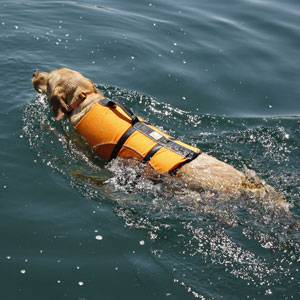Table of Contents
How to Anchor a Floating Mat
Water mats are way more fun than you might think by just looking at them. Getting next-level lounging, playing, and walking out on the water is a whole lot simpler with a floating mat! If you just bought, or are thinking about buying a floating mat, your second thought after, “Which mat should I get?” is probably going to be, “How to anchor a floating mat?” Well, this article is here to help you answer that very question! When floating is the goal, you don’t want to be drifting away. Even on a relatively small lake with no current, drifting into weeds or deep water is not ideal. Taking a few moments before you get on the mat to anchor it to a dock, boat, buoy, or your own anchor can make it a worry-free time on the water for you and your loved ones. We’ll go over a few of these ways to help you reclaim your peace of mind.

What am I going to anchor?
First things first, you’ll need to have a floating mat to anchor! If you’re still in the market for a floating mat, or looking to upgrade, we put together this guide to help you choose the best one. A majority of floating mats come with some kind of straps or ropes with clips for anchoring, with D-rings or grommets on the actual mats. Check the manufacturer’s information or the packaging carefully to see if you need to buy additional supplies to anchor it.
Where am I going to anchor?
There are a few ways to anchor your floating mat, depending on where and how you are using it. Some of the most common places are:
- A dock or pier
- A boat
- Anchored buoy
- Anchor
- Another floating mat
The main criteria for somewhere to anchor your float is that it is solid, secure, and safe. If you are unsure of the safety of where you will be using it, consult with a lifeguard or other safety personnel before you start.
Attaching your floating mat to another floating mat is a great way to make a larger island or walkway. However, it won’t prevent either mat from drifting away in wind or currents, so be sure at least one of the connected floating mats is securely anchored to something.
How am I going to anchor a floating mat?
No matter what you are going to anchor your mat to, the first two steps will be the same:
- Unroll/inflate your floating mat/pad.
- Attach anchoring straps, cords, rope, or chains to the D-rings or grommets on your mat/pad.
Once you have secured the straps, etc, to your floating mat, you can clip or tie the other end to a stable part of the boat, dock, or buoy that you are anchoring to. Some permanent fixtures on rivers and lakes have small hooks especially for anchoring floats or smaller vessels, and boats are equipped with many different secure points for anchoring.
If you are using your own anchor, securing the anchor to the river, lake, or sea bed will vary depending on what type of anchor it is. Some modern anchors are bags that can be filled with rocks or sand that are allowed to sink to the bottom of the water on a cord, whereas traditional anchors attach themselves to the river, lake, or sea bed. Please consult the manufacturer or refer to the instructions on your specific anchor for more detailed information.
How to anchor a floating mat: best practices
Here are a few best practices to bear in mind when setting up your floating mat.
- Floating mats are a fun and flexible piece of leisure equipment. They can be used for a swimming platform attached to a boat or buoy, or as a way to lounge in the sun while keeping cool in the water. As they are made from a softer material, they are a great choice for children to use for climbing out of water more easily and comfortably. Some people even use them as walkways between anchored boats. We always advise you to use common sense around any body of water, and use personal floatation devices (PFD) where necessary. If you are unsure about the appropriate PFD for a person or situation, please refer to the USCG website for more information.
- There are many ways to tie rope, straps, or cords, especially when it comes to anchoring. We strongly advise you to practice these in advance if you are going to tie them yourself. If you are ever unsure, please seek the help of an experienced seafarer or lifeguard.
- Make sure you only anchor your mat to an unbroken and solid point. If the wood of a dock or pier looks splintered, choose another section. If a hood looks rusted and weak, try somewhere else. Common sense and erring on the side of caution is always best.
- You should always test the strength of the anchoring of the floating mat before allowing children or other adults to use the mat. If you leave the floating mat in the water for multiple days, be sure to test the anchoring and the safety of the mat before use each day. Checking for tears or broken equipment can help prevent injuries or a lost mat later on.
It might seem scary to think about the necessity of securing a floating mat, especially when you think about all of the things that could go wrong. As long as you follow the instructions for your specific equipment, be it straps, clips, or elastic tethers, you will be able to enjoy your floating mat with ease. Make sure to check the rules of the body of water you are planning to use it on to see if they have any additional requirements for anchoring floating mats, or the use of PFDs.


